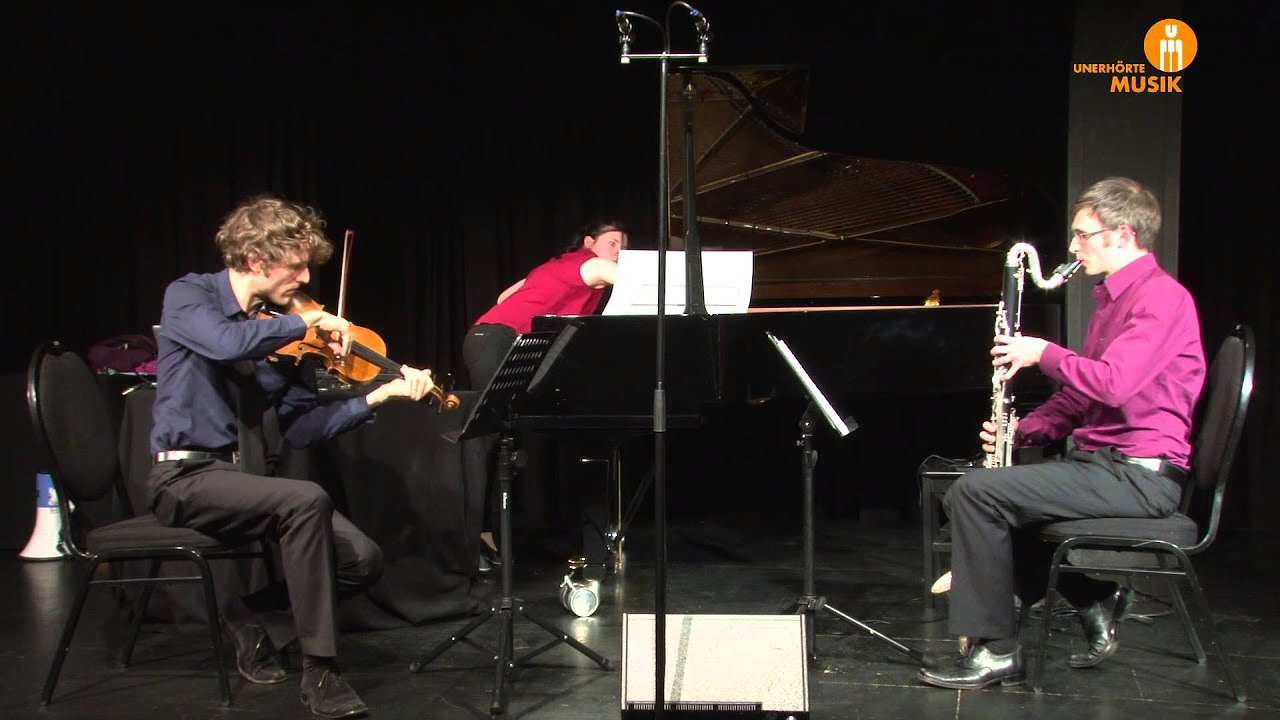Perlug
for one talking violinist
UA 10.03.2024 artloft, Berlin
Perlug is a tragicomic composition. It is based on an Italian children’s poem by Roberto Piumini, the basic form of which comprises just four lines:
Pierluigino affamato
proprio tutto si è mangiato
solo il nome gli restò
e la O lui si mangiò.
Hungry Pierluigino
ate everything
Only his name remained
and the O, he ate it.
The poem is then repeated, but without the “O”, which Pierluigino has already eaten. So the next verse reads:
Pierluigin affamat
prpri tutt si è mangiat
sl il nme gli rest
e la T lui si mangí.
(here he eats the “T”)
This process is repeated as many times (14 times in total) until the text has taken on the following form in the last verse:
s
s s
S s.
From a compositional perspective, there were several points of reference for me. Firstly, there is the comic-absurd, playful character of the poem, which can already be heard in the first verse and is revealed and intensified as the poem progresses. At first, the text is still clearly comprehensible, even if it already displays a slightly artificial alienation. At a certain point, the comprehensibility of the text is lost and we get the impression that we are dealing with an invented language or one that is completely unknown to us. Towards the end, all that remains are individual sounds that no longer have any hint of language.
I followed this development to a large extent with the music, even though I changed the order of the verses considerably and thus broke up the linearity and determinism of the text. This enabled me to pursue a musically more interesting and less predictable dramaturgy, because I quickly came to the conclusion that simply translating the development of the text into a musical development would not have been very meaningful.
It was a very momentous decision to have the violinist himself speak the text, so that he has a dual role as instrumentalist and narrator while playing, which is a great challenge on several levels – both technically and interpretatively. This idea was inspired from the outset by Benedikt Bindewald, who, in addition to his main activity as a musician and composer, also appears time and again as an actor and with whom I was in very close contact during the composition process – mostly at a distance due to the pandemic.
The violin part is closely interwoven with speech. The syllables and sounds serve as rhythmic triggers or end points of instrumental gestures and their timbres are often influenced by the phonemes’ color or the speech ductus’s movement. In the parts in which the speech has already disintegrated into isolated consonant sounds, the instrumental part is also extremely reduced and moves in a shadowy, noisy manner. In the verses in which the text is recited fully intelligibly, the violin backs it with an atmospheric carpet of sound that only occasionally punctuates the recitation of the text.
One dramaturgically important moment is the “stuttering variations” (stanzas 8 to 10, albeit in reverse order). Here, the deconstruction of the text is at a point where the familiar speech sounds threaten to turn into pure sound and it seems as if clear articulation is no longer possible – as if the speaker’s speech is stuck in his throat. In my interpretation, the tragedy behind the playful and absurd is revealed here: The hunger, the desire and need to devour or be fed, has become so great that it threatens to devour and destroy one’s ability to express oneself and thus the basis of one’s own identity. The violin rears up in a desperate struggle and braces itself against the nihilation – furiously driving the performer to the limits of what is physically possible.
Perlug can be seen as a solo music theatre miniature but also as a pure concert piece. This ambiguity is intentional and leaves room for many different interpretations of the piece.
Perlug
